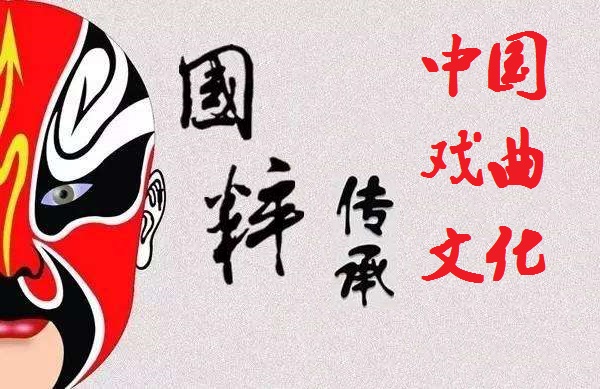
当前课程知识点:Five Disciplines of Management Quality and Ability —— Follow Me to Learn Management > The Fifth Discipline: Outstanding Leadership, Reform and Innovation > 5.2 Trait Theory of Leadership > 5.2 Trait Theory of Leadership
返回《Five Disciplines of Management Quality and Ability —— Follow Me to Learn Management》慕课在线视频课程列表
返回《Five Disciplines of Management Quality and Ability —— Follow Me to Learn Management》慕课在线视频列表
大家好
在进入本次课堂程之前
我们先来 想一想
李君是我的一位老同学
本来在一家国企工作工作稳定
可在几年前
李君与他的好朋友王坚只是聊了一个下午
他就做出了让很多人无法理解的决定
辞去国企稳定工作
加入到王坚的创业团队
几年时间过去了
现在他们的公司做的非常成功
最近 李君说出了当时做出那个决定的原因
当时很多人都认为我疯了
其实是王坚身上几个特点吸引了我
首先
王坚对游戏行业非常了解甚至是疯狂
第二
王坚非常渴望成功
有一股子坚持劲儿
并且王坚来找我的时候
已经清晰思考了公司未来的规划
王坚同时是一个非常有责任心善良的人
所以我相信王坚会是一个成功的领导者
愿意跟随他一起奋斗
现在看来我当时的选择果然是正确的
思考题
为什么李君相信王坚会是一个成功的领导者
王坚具备了领导者哪些方面的特质
请带着你的思考
让我们一起来聊一聊 领导特质理论
如何提高领导的有效性
一直是管理学界关注的热点问题
从20世纪40年代开始 学者从不同角度
对领导有效性问题进行了大量研究
早期的研究更多关注的是领导者特质
比如领导者的性格
进取心 正直与诚实等等
人们认为某种人能够成为领导
一定是因为他们具备了与众不同的特质
这一类领导理论被称为 领导特质理论
但是后来的大量研究发现
具备相同个人特质的人
并不一定都成为了领导
同样都是领导
他们的特质却不完全一样
个人特质对于领导的有效性有一定的影响
但并不是最关键性的因素
于是
人们开始关注领导的行为和风格
人们认为领导的有效性取决于领导行为和风格
一定存在着某种最有效的领导行为或风格
这一类领导理论被称为 领导行为理论
但是后来的大量研究发现
相同的领导行为并不一定都是有效的
同样都是领导
他们的领导行为和风格却不完全一样
今天 人们终于认识到
领导的有效性应该是
根据情境的不同来选择不同的领导者
不同的领导行为
这一类理论被称为 领导情境理论
又称为 权变领导理论
这次课我们主要聊一聊第一种领导理论
领导特质理论
领导特质理论也称领导素质理论
这种理论着重研究领导者的品质和特性
是领导理论研究的开端
领导特质理论根据特质来源
的不同有两个分支
传统特质理论和现代特质理论
传统特质理论认为
领导者所具有的特性是天生的
是由遗传决定的
现代特质理论认为
领导者的特性和品质是在实践中形成的
是可以通过教育训练培养的
随着研究的深入和实践的反馈
传统特质理论受到了各方面的质疑
1 据有关统计
自1940年至1947年的124项研究中
所得出的天才领导者的个人特性众说纷纭
各特性之间甚至相矛盾
2 许多被认为具有天才领导者特性的人
并没有成为领导者
传统的领导特质理论由于其自身的局限性
如今已经很少有人赞同这种观点
现代领导特质理论认为
领导者的特性和品质并非全是与生俱来的
可以在领导实践中形成
也可以在训练和培养中形成
今天的管理研究与实践已经证明
领导者的特性和品质
对于领导有效性有着重要影响
有效的领导者是需要
具备一些基本的素质要求的
同时
领导者的特性和品质是可以通过
不断的管理实践和培养的方式得到提高的
但是
领导者的特性和品质并不是
决定领导有效性的唯一因素
自二十世纪九十年代以来
国内外学者对领导特性理论的研究
主要聚焦于魅力型领导的研究
魅力型领导通常被认为具有超凡的领袖魅力
他们通过自己的魅力
能够很好地影响下属
极富感染力
研究发现
魅力型领导一般具有以下特点
第一
这些人具有远景规划
以及清晰描述这种目标的能力
比如说阿里巴巴的马云
他的远景规划的能力就非常强
在公司还只有十几个人规模的时候
马云就坚定地告诉员工
电商是发展大势
阿里巴巴一定能成为国内首屈一指的大公司
正是这种造梦精神
以及清晰描述目标远景的能力
一直鼓舞着阿里巴巴的员工一步步走到现在
第二
就是对理想矢志不移的执着追求
这我们在讲西游记管理团队时就提到过
正是由于唐僧对理想的坚定和执着
才带领团队取到真经
第三
这样的人敢冒风险
愿意承担责任
第四
反传统的行为
也就是强烈的创新意识
第五方面
强烈的自信心
魅力型领导理论认为
成功的领导者大多数拥有这几种共同的特质
现在我们回到课程开始时的 想一想
为什么李君相信王坚会是一个成功的领导者
王坚具备了领导者哪些方面的特质
首先
他看到了王坚对专业知识的掌握
这是创业入门的基础
第二
他从王坚身上看到了
强烈的自信心和上进心
他有着强烈的成功欲望
这是有效领导者必不可少的条件
其次
他从王坚身上看到了
清晰的目标规划和表达能力
这些都是作为一个成功领导者不可或缺的特质
学以致用
在课程结束前
给大家留下一个思考题
请大家 用一用
运用领导特质理论
分析毛泽东 周恩来等老一辈领导人
他们身上具备了哪些优秀领导人的特质呢
关于思考题的答案
我们会在课程的互动讨论区
同大家一起讨论
并给出我们的观点
好 这次课就到这里
下次课见
-0.1 What is Management: The Secret of Management is to Borrow Resources
--0.1 What is Management: The Secret of Management is to Borrow Resources
--0.1 What is Management: The Secret of Management is to Borrow Resources
--0.1 What is Management: The Secret of Management is to Borrow Resources
-0.2 Natural Attribute and Social Attribute of Management
--0.2 Natural Attribute and Social Attribute of Management
--0.2 Natural Attribute and Social Attribute of Management
--0.2 Natural Attribute and Social Attribute of Management
-0.3 The Scientificity and Artistry of Management
--0.3 The Scientificity and Artistry of Management
--0.3 The Scientificity and Artistry of Management
--0.3 The Scientificity and Artistry of Management
-0.4 Management Functions, Skills and Roles
--0.4 Management Functions, Skills and Roles
--0.4 Management Functions, Skills and Roles
--0.4 Management Functions, Skills and Roles
-0.5 Case Study: Personal Excellence Doesn’t Mean Much
--0.5 Case Study: Personal Excellence Doesn’t Mean Much
--0.5 Case Study: Personal Excellence Doesn’t Mean Much
--0.5 Case Study: Personal Excellence Doesn’t Mean Much
-0.6 Centennial Management Context (Ⅰ)
--0.6 Centennial Management Context (Ⅰ)
--0.6 Centennial Management Context (Ⅰ)
--0.6 Centennial Management Context (Ⅰ)
-0.7 Centennial Management Context (Ⅱ)
--0.7 Centennial Management Context (Ⅱ)
--0.7 Centennial Management Context (Ⅱ)
--0.7 Centennial Management Context (Ⅱ)
-0.8 Case Study: Management Enlightenment of Journey to the West Team
--0.8 Case Study: Management Enlightenment of Journey to the West Team
--0.8 Case Study: Management Enlightenment of Journey to the West Team
--0.8 Case Study: Management Enlightenment of Journey to the West Team
-Course Introduction Unit Test
-1.1 Insight into the General Trend of the Environment (Ⅰ): PEST Method
--1.1 Insight into the General Trend of the Environment (Ⅰ): PEST Method
--1.1 Insight into the General Trend of the Environment (Ⅰ): PEST Method
--1.1 Insight into the General Trend of the Environment (Ⅰ): PEST Method
-1.2 Insight into the General trend of the Environment (Ⅱ): Porter’s Five Forces Model
--1.2 Insight into the General trend of the Environment (Ⅱ): Porter’s Five Forces Model
--1.2 Insight into the General trend of the Environment (Ⅱ): Porter’s Five Forces Model
--1.2 Insight into the General trend of the Environment (Ⅱ): Porter’s Five Forces Model
-1.3 Case Study: How McDonald’s Entered Chinese Market
--1.3 Case Study: How McDonald’s Entered Chinese Market
--1.3 Case Study: How McDonald’s Entered Chinese Market
--1.3 Case Study: How McDonald’s Entered Chinese Market
-1.4 Strategic Decision Analysis Tools: SWOT Analysis and BCG Matrix
--1.4 Strategic Decision Analysis Tools: SWOT Analysis and BCG Matrix
--1.4 Strategic Decision Analysis Tools: SWOT Analysis and BCG Matrix
--1.4 Strategic Decision Analysis Tools: SWOT Analysis and BCG Matrix
-1.5 Group Decision-making Tools and Methods: Delphi Method and Brainstorming Method
--1.5 Group Decision-making Tools and Methods: Delphi Method and Brainstorming Method
--1.5 Group Decision-making Tools and Methods: Delphi Method and Brainstorming Method
--1.5 Group Decision-making Tools and Methods: Delphi Method and Brainstorming Method
-The First Unit Test
-2.1 Attitude Determines Everything
--2.1 Attitude Determines Everything
--2.1 Attitude Determines Everything
--2.1 Attitude Determines Everything
-2.2 The Components and Formation of Attitude
--2.2 The Components and Formation of Attitude
--2.2 The Components and Formation of Attitude
--2.2 The Components and Formation of Attitude
-2.3 How to Change the Attitude of Employees
--2.3 How to Change the Attitude of Employees
--2.3 How to Change the Attitude of Employees
--2.3 How to Change the Attitude of Employees
-2.4 Responsibility and Efficient Execution
--2.4 Responsibility and Efficient Execution
--2.4 Responsibility and Efficient Execution
--2.4 Responsibility and Efficient Execution
-2.5 Ethics and Core Values
-The Second Unit Test
-3.1 Basic Issues in Organization
--3.1 Basic Issues in Organization
--3.1 Basic Issues in Organization
--3.1 Basic Issues in Organization
-3.2 How to Establish an Effective Organizational Structure (Ⅰ)
--3.2 How to Establish an Effective Organizational Structure (Ⅰ)
--3.2 How to Establish an Effective Organizational Structure (Ⅰ)
--3.2 How to Establish an Effective Organizational Structure (Ⅰ)
-3.3 How to Establish an Effective Organizational Structure (Ⅱ)
--3.3 How to Establish an Effective Organizational Structure (Ⅱ)
--3.3 How to Establish an Effective Organizational Structure (Ⅱ)
--3.3 How to Establish an Effective Organizational Structure (Ⅱ)
-3.4 Case Study: The Responsibility of the Sales Department
--3.4 Case Study: The Responsibility of the Sales Department
--3.4 Case Study: The Responsibility of the Sales Department
--3.4 Case Study: The Responsibility of the Sales Department
-3.5 Effective Communication Skills
--3.5 Effective Communication Skills
--3.5 Effective Communication Skills
--3.5 Effective Communication Skills
-3.6 Organizational Cultural Function and Content
--3.6 Organizational Cultural Function and Content
--3.6 Organizational Cultural Function and Content
--3.6 Organizational Cultural Function and Content
-3.7 Case Study: Resignation (Ⅰ)
--3.7 Case Study: Resignation (Ⅰ)
--3.7 Case Study: Resignation (Ⅰ)
--3.7 Case Study: Resignation (Ⅰ)
-3.8 Case Study: Resignation (Ⅱ)
--3.8 Case Study: Resignation (Ⅱ)
--3.8 Case Study: Resignation (Ⅱ)
--3.8 Case Study: Resignation (Ⅱ)
-The Third Discipline Unit Test
-4.1 How to Recruit Good Staff
--4.1 How to Recruit Good Staff
--4.1 How to Recruit Good Staff
--4.1 How to Recruit Good Staff
-4.2 Motivate Employees’ Work Potential
--4.2 Motivate Employees’ Work Potential
--4.2 Motivate Employees’ Work Potential
--4.2 Motivate Employees’ Work Potential
-4.3 Content-based Incentive Theory (Ⅰ): Hierarchical Theory and ERG theory
--4.3 Content-based Incentive Theory (Ⅰ): Hierarchical Theory and ERG theory
--4.3 Content-based Incentive Theory (Ⅰ): Hierarchical Theory and ERG theory
--4.3 Content-based Incentive Theory (Ⅰ): Hierarchical Theory and ERG theory
-4.4 Content-based Incentive Theory (Ⅱ): Motivator-Hygiene Theory
--4.4 Content-based Incentive Theory (Ⅱ): Motivator-Hygiene Theory
--4.4 Content-based Incentive Theory (Ⅱ): Motivator-Hygiene Theory
--4.4 Content-based Incentive Theory (Ⅱ): Motivator-Hygiene Theory
-4.5 Process-based Incentive theory: Expectation Theory and Fairness Theory
--4.5 Process-based Incentive theory: Expectation Theory and Fairness Theory
--4.5 Process-based Incentive theory: Expectation Theory and Fairness Theory
--4.5 Process-based Incentive theory: Expectation Theory and Fairness Theory
-4.6 Behavioral Transformation Incentive Theory: Reinforcement Theory
--4.6 Behavioral Transformation Incentive Theory: Reinforcement Theory
--4.6 Behavioral Transformation Incentive Theory: Reinforcement Theory
--4.6 Behavioral Transformation Incentive Theory: Reinforcement Theory
-The Fourth Unit Test
-5.1 The Essence and Tasks of Effective Leaders
--5.1 The Essence and Tasks of Effective Leaders
--5.1 The Essence and Tasks of Effective Leaders
--5.1 The Essence and Tasks of Effective Leaders
-5.2 Trait Theory of Leadership
--5.2 Trait Theory of Leadership
--5.2 Trait Theory of Leadership
--5.2 Trait Theory of Leadership
-5.3 Leadership Behavior Theory
--5.3 Leadership Behavior Theory
--5.3 Leadership Behavior Theory
--5.3 Leadership Behavior Theory
-5.4 Leadership Situation Theory
--5.4 Leadership Situation Theory
--5.4 Leadership Situation Theory
--5.4 Leadership Situation Theory
-5.5 Innovation and Entrepreneurship
--5.5 Innovation and Entrepreneurship
--5.5 Innovation and Entrepreneurship
--5.5 Innovation and Entrepreneurship
-5.6 Two New Trends of Innovation
--5.6 Two New Trends of Innovation
--5.6 Two New Trends of Innovation
--5.6 Two New Trends of Innovation
-The Fifth Unit Test
-Final Exam

